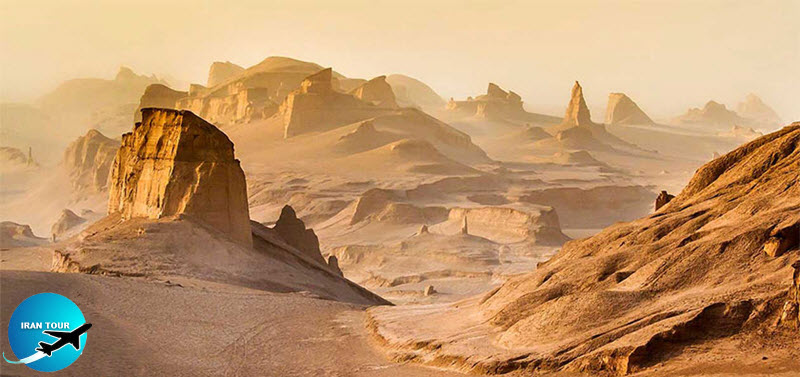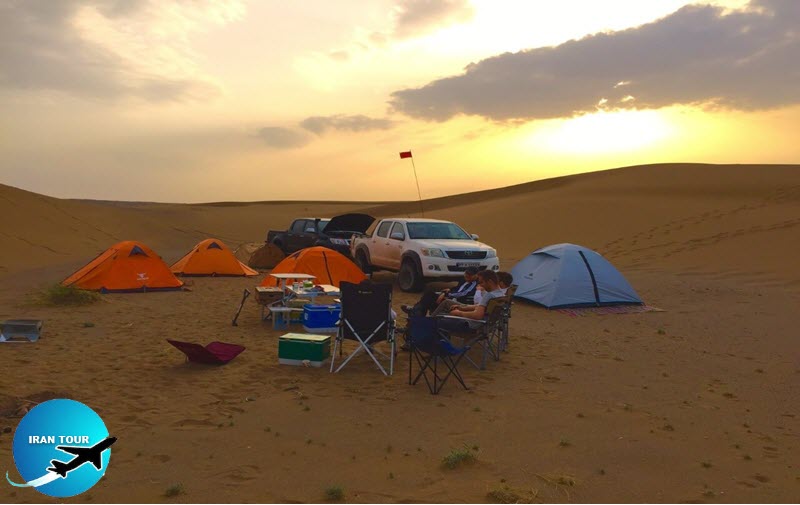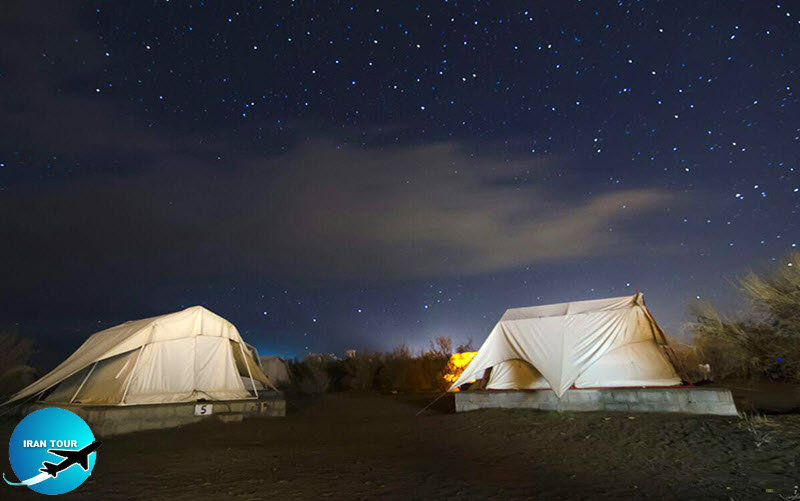Copyright 2020 - 2021 irantour.tours all right reserved
Designed by Behsazanhost
Iran Deserts
Iran Deserts
By: Mohammad Hassan Talebian
The deserts in Iran, most of which fall in the center of the Iranian plateau, are well known in the world for their enormous size, barrenness, and moving sands. Lut Desert is located southeast of Iran and Dasht-Kavir or Markazi Desert is located in the center. The length of the sand dunes in the Markazi Desert is approximately 150 kilometers. The relocation of moving sands is a big problem that threatens the towns and farms at the margin of Iranian deserts.
 |
Recently oily mulch has been poured in the deserts or herbs resistant to dry and barren weather have been planted and
Salty mud and slime lie beneath the crest of the Iranian deserts which is 10cm thick. Water is preserved in the slime through underground canals which generate deep slimes. The deep moving slime accumulated beneath the desert's thin crest threatens people and animals who try to cross the desert because the slimy moats can devour them.
 |
The tough salty crest covering the underground slime is so closely integrated that does not give any clue to the existence of such canals which are slushy and watery even in summer. Although the deserts at the northern and eastern margin of the Markazi Desert are small in size they are dangerous for people and animals to tread. One of the wonders of the Iranian desert is the stone-paved roads which connect Semnan and Kerman to each other but only 30km of that road can be used by cars, Surprising enough the stones for this road have been transferred to the desert from distant regions.
Lut Desert located southeast of Iran at a latitude of 29 to 32 degrees north and longitude of 58 to 59 degrees east is the most extraordinary natural phenomenon in the country. Three major mountainous ranges including the Zagros Mountain Range, a cluster of mountains between Afghanistan and Iran, and a number of hills east of Kerman approach each other and surround the immense basin known as the southern Lut Desert.
 |
The Markazi Desert is the lowest desert on the Iranian plateau. According to geologists in the past, this desert was Tethys Ocean which evaporated and dried up during the course of centuries because of rising temperature. The sediments left by the sea in the desert justify this theory. A big part of the Markazi Desert in the south and the center is filled with moats and sand dunes. The average elevation of Lut Desert is 700 m from sea level. The lowest elevation of the desert is about 650 m in the central parts and the highest peak at Namakkhor and Biabanak lakes is approximately 838 m from the sea level. The temperature in this desert in July, which is the warmest month of the year, is about 60°C in the daytime and 25 to 30°C in the evenings Such a drastic change of temperature can break a solid stone into pieces. In cold weather, the temperature fluctuates between 7 to 13°C in
- Details
- Category: IRAN Blog